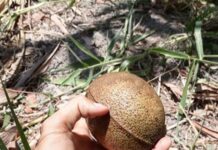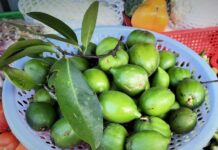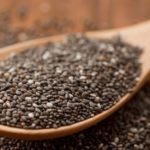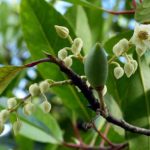Hawthorn berries, or mountain apples, are a famous delicacy from the northwestern mountains of Vietnam and are loved by many. However, with the increasing presence of untraceable Chinese hawthorn berries in the market, it’s essential to know how to distinguish the two to ensure you’re getting the authentic product. Read on to learn how to make the right choice!
1 What are Hawthorn Berries?
Hawthorn berries, also known as mountain apples or rose apples, have the scientific name Rosacea and belong to the Rosaceae family. These trees typically grow to a height of 2-5 meters and are found in highland areas between 1500 and 3000 meters above sea level. In Vietnam, the northern mountainous provinces of Hoa Binh, Lao Cai, Lai Chau, Yen Bai, and Son La, among others, are known for their hawthorn berry cultivation.
 Hawthorn trees are typically found in highland areas between 1500 and 3000 meters above sea level.
Hawthorn trees are typically found in highland areas between 1500 and 3000 meters above sea level.
Additionally, hawthorn berries are also cultivated in countries such as India, Thailand, Bhutan, and southwestern China.
2 Health Benefits of Hawthorn Berries
Helps Lower Cholesterol
Hawthorn berries contain nutrients that effectively reduce bad cholesterol in the body, thereby promoting a healthier cardiovascular system and overall well-being.
 Hawthorn berries help reduce bad cholesterol and promote a healthy cardiovascular system.
Hawthorn berries help reduce bad cholesterol and promote a healthy cardiovascular system.
They are known to support and prevent cardiovascular diseases such as atherosclerosis, myocardial infarction, and hypertension. For this reason, hawthorn berries are considered a valuable natural remedy for lowering blood fat and regulating blood pressure.
Boosts the Immune System
These berries are packed with antioxidants and vitamins, which strengthen the immune system, enhance metabolism, and protect against various diseases.
 Hawthorn berries boost the immune system and protect against diseases.
Hawthorn berries boost the immune system and protect against diseases.
Aids in Digestive Disorders
Hawthorn berries are beneficial in treating digestive issues. The nutrients in these berries increase stomach enzymes, thereby improving digestion.
Improves Heart Function
Consuming hawthorn berries can improve heart function, lower blood pressure, increase coronary blood flow, and prevent blood vessel dilation and arrhythmias.
3 How to Distinguish Vietnamese and Chinese Hawthorn Berries
Shape and Color
Vietnamese hawthorn berries have a slightly rough and bumpy texture with very green skin and are typically sourced from regions like Son La, Ha Giang, and Mu Cang Chai. On the other hand, Chinese hawthorn berries tend to have a smoother, shinier skin and are generally larger in size.
 Distinguish Vietnamese and Chinese hawthorn berries by their shape and color.
Distinguish Vietnamese and Chinese hawthorn berries by their shape and color.
It’s common for vendors to mix these two types to increase their profits, as Vietnamese hawthorn berries are becoming scarcer and transportation costs are high.
Taste
Vietnamese hawthorn berries from the Northwest regions have a sour and slightly astringent taste with a mild sweetness. In contrast, Chinese hawthorn berries tend to be softer and spongier, with unripe berries tasting bitter and ripe ones tasting sweet.
Firmness
According to shop owners, Vietnamese hawthorn berries are firm and crisp, even when they start to wilt. In contrast, Chinese hawthorn berries are softer, mushier, and tend to rot instead of wilting over time.
Price
Vietnamese hawthorn berries typically cost 40,000-60,000 VND/kg, while Chinese hawthorn berries are cheaper, ranging from 30,000-35,000 VND/kg.
 Chinese hawthorn berries are cheaper, ranging from 30,000-35,000 VND/kg.
Chinese hawthorn berries are cheaper, ranging from 30,000-35,000 VND/kg.
Hawthorn berries are now widely available beyond the Northwest regions, sold in markets, stores, and even on street corners. As their popularity grows, so does the challenge of identifying their origin. Therefore, it’s essential to purchase them from reputable sources.
We hope this article has provided you with valuable insights. While there are no official statistics on the safety of Chinese hawthorn berries, as a consumer, it’s important to be able to differentiate between the two types to make an informed and healthy choice.







































